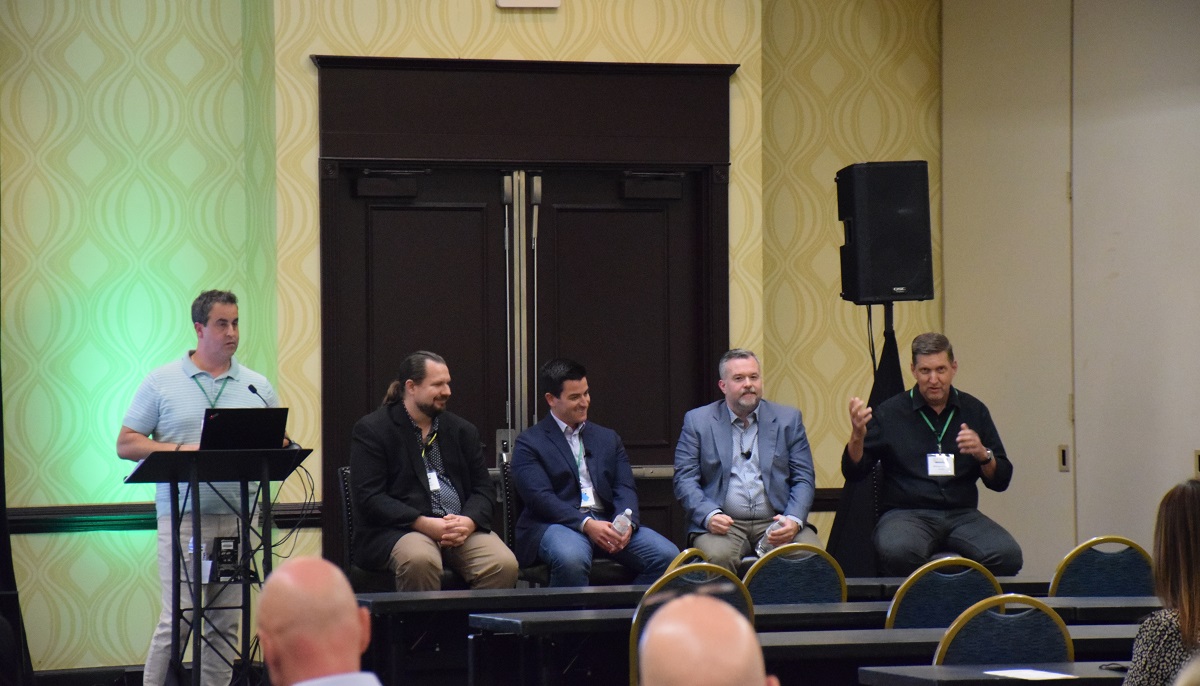If AV integrators are to truly adopt an as-a-service model and become a part of the future of the digital economy, they have to speak the same language as their customers and the IT professionals they often interface with, according to a panel of industry experts at NSCA’s Pivot to Profit last month.
The session, “Networked Solutions that Differentiate & Drive Revenue,” dove into the importance of the integration community to shift to a service-based cloud subscription model designed to make technology more affordable for customers and provide a constant flow of revenue.
The IT industry is already service-based
According to moderator Rob Simopoulos co-founder of cybersecurity firm Defendify, a former AV professional and NSCA board member, most technologies being purchased by an organization’s IT department are subscription based. He cited Microsoft 365, Apple systems and more.
“There’s no doubt that the CIO and director of IT are buying a lot of their systems and software in a recurring revenue, subscription model,” he said. “The opportunities are surely there.”
Managed service providers in the IT space have been operating under that model for a long time, offering clients computers, servers, proactive monitoring and more in a monthly subscription designed to last two or three years, after which the customer can opt to upgrade to all new equipment and solutions, Simopoulos says.
With a service-based offering, one of the most important things is developing the resources to support those offerings, says Chris Gazdic, global director and AVaaS product executive at WESCO Distribution.
“When you start talking about including this, it’s having staff to be able to support it and having a call center enabled to be part of that package,” Gazdic said.
You need to speak IT’s language
However, many of these services are deployed and managed via the cloud, which requires a level of IT knowledge not often found in pro AV.
When Andrew Pelletier, vice president of operations at SIGNET asked the session attendees how many of them employ a chief technical officer, very few hands were raised.
“If you’re going to play in that space and have that offering, you need to talk the talk and walk the walk,” Pelletier says. “It’s not good enough to just have some level of understanding – you need to have a much deeper understanding.”
Echoing comments from industry experts across several sessions at Pivot to Profit, Frank West, vice president of systems sales for the Americas at QSC, said the AV industry needs to become as standard IT and mainstream as possible to help move the industry towards service-based offerings and keep up with other tech disciplines.
“We’re seeing that on the networking side and also on some of the programming side, using common languages that kids are learning in university today as opposed to the least useful Latin AV languages we’ve been stuck with the last 20 years,” West says.
Cybersecurity demands are increasing and presenting opportunity
Throughout the sessions at Pivot to Profit, panelists spoke at length about the need to demonstrate cybersecurity awareness to appease the concerns of your customers who concerned with service providers like AV integrators introducing risk to their IT environment.
Questionnaires on the cybersecurity posture of your organization have been common for a handful of years, but now they’re much more invasive.
“They want to review penetration test results,” West says. “That’s a very careful conversation that quite frankly, our integration partners … aren’t prepared to have.”
In addition to asking hardware vendors about the security of those products so they are ready to answer those same questions from end user customers, integrators should also fully embrace the AV and IT convergence and begin offering IT support and cybersecurity, which Simopoulos calls a “differentiator” in the marketplace.
“They’re positioning that as saying, ‘Not only do we do security and audio visual and IT systems, but we’re also on the cybersecurity side of that as well,'” Simopoulos says.










